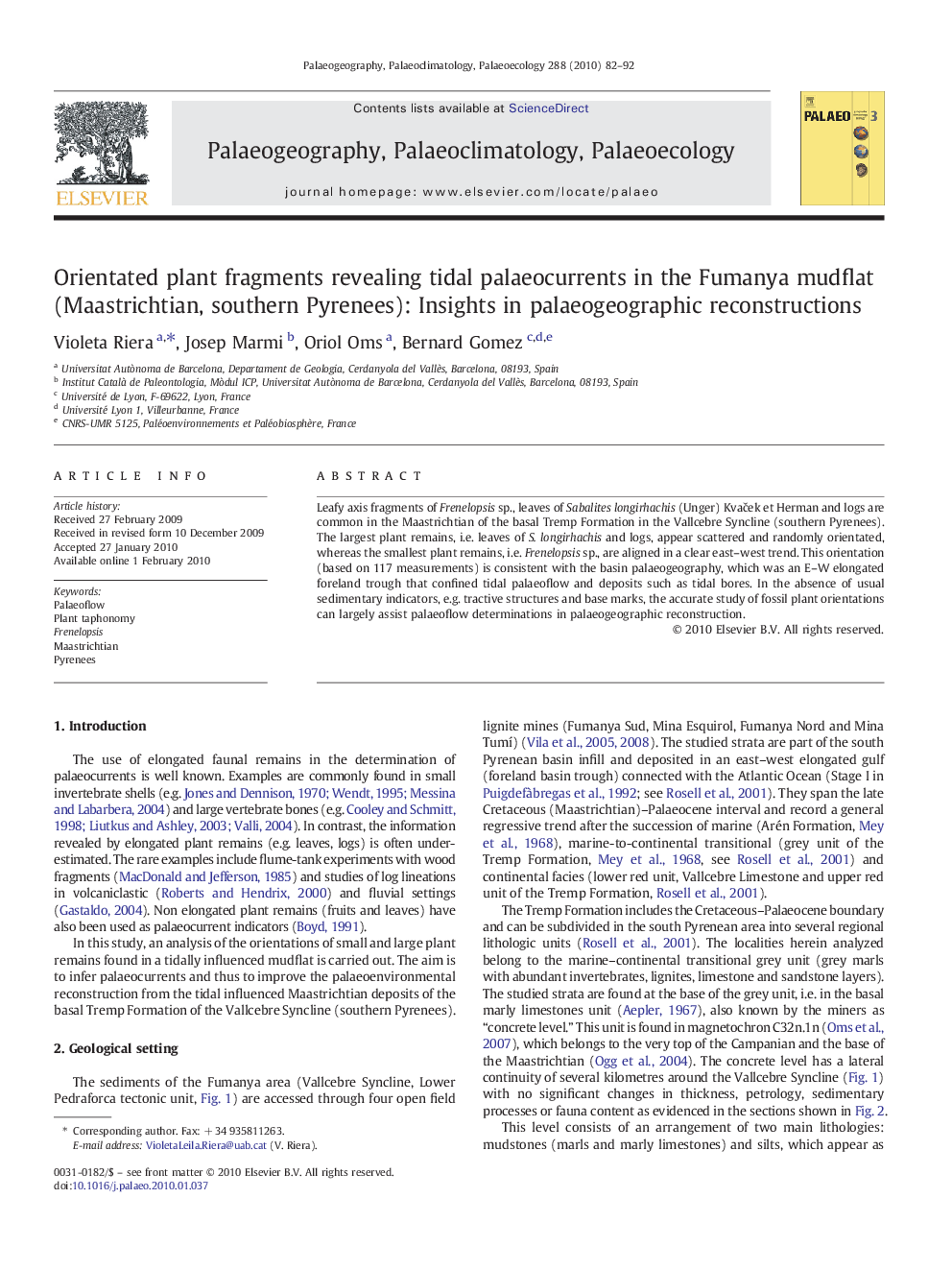| Article ID | Journal | Published Year | Pages | File Type |
|---|---|---|---|---|
| 4467812 | Palaeogeography, Palaeoclimatology, Palaeoecology | 2010 | 11 Pages |
Leafy axis fragments of Frenelopsis sp., leaves of Sabalites longirhachis (Unger) Kvaček et Herman and logs are common in the Maastrichtian of the basal Tremp Formation in the Vallcebre Syncline (southern Pyrenees). The largest plant remains, i.e. leaves of S. longirhachis and logs, appear scattered and randomly orientated, whereas the smallest plant remains, i.e. Frenelopsis sp., are aligned in a clear east–west trend. This orientation (based on 117 measurements) is consistent with the basin palaeogeography, which was an E–W elongated foreland trough that confined tidal palaeoflow and deposits such as tidal bores. In the absence of usual sedimentary indicators, e.g. tractive structures and base marks, the accurate study of fossil plant orientations can largely assist palaeoflow determinations in palaeogeographic reconstruction.
